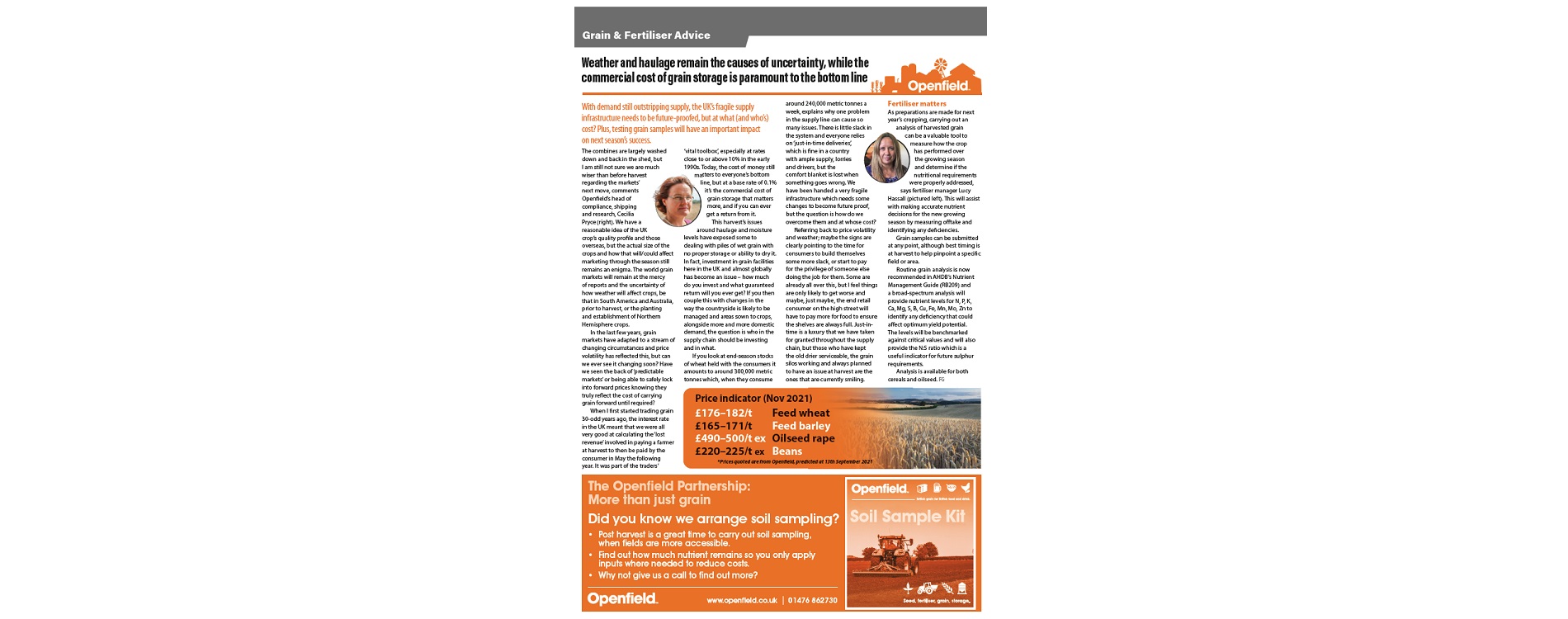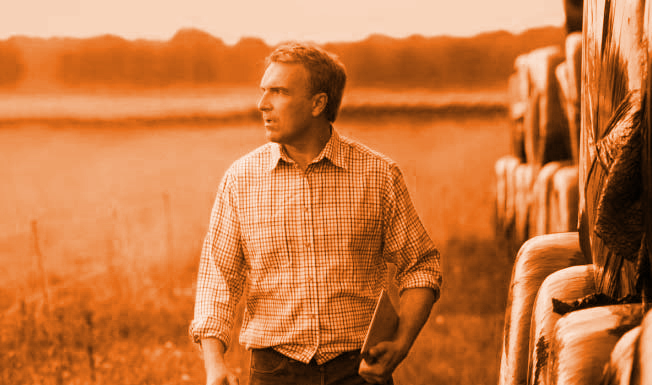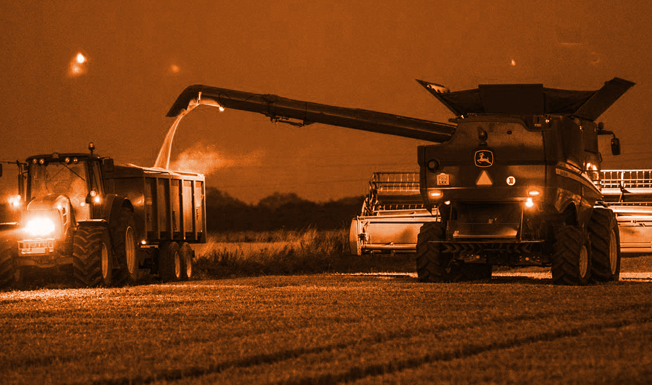Weather and haulage remain the causes of uncertainty, while the commercial cost of grain storage is paramount to the bottom line
With demand still outstripping supply, the UK’s fragile supply infrastructure needs to be future-proofed, but at what (and who’s) cost? Plus, testing grain samples will have an important impact on next season’s success.
The combines are largely washed down and back in the shed, but I am still not sure we are much wiser than before harvest regarding the markets’ next move, comments Openfield’s head of compliance, shipping and research, Cecilia Pryce. We have a reasonable idea of the UK crop’s quality profile and those overseas, but the actual size of the crops and how that will/could affect marketing through the season still remains an enigma. The world grain markets will remain at the mercy of reports and the uncertainty of how weather will affect crops, be that in South America and Australia, prior to harvest, or the planting and establishment of Northern Hemisphere crops.
In the last few years, grain markets have adapted to a stream of changing circumstances and price volatility has reflected this, but can we ever see it changing soon? Have we seen the back of ‘predictable markets’ or being able to safely lock into forward prices knowing they truly reflect the cost of carrying grain forward until required? When I first started trading grain 30-odd years ago, the interest rate in the UK meant that we were all very good at calculating the ‘lost revenue’ involved in paying a farmer at harvest to then be paid by the consumer in May the following year. It was part of the traders’ ‘vital toolbox’, especially at rates close to or above 10% in the early 1990s. Today, the cost of money still matters to everyone’s bottom line, but at a base rate of 0.1% it’s the commercial cost of grain storage that matters more, and if you can ever get a return from it. This harvest’s issues around haulage and moisture levels have exposed some to dealing with piles of wet grain with no proper storage or ability to dry it. In fact, investment in grain facilities here in the UK and almost globally has become an issue – how much do you invest and what guaranteed return will you ever get? If you then couple this with changes in the way the countryside is likely to be managed and areas sown to crops, alongside more and more domestic demand, the question is who in the supply chain should be investing and in what.
If you look at end-season stocks of wheat held with the consumers it amounts to around 300,000 metric tonnes which, when they consume around 240,000 metric tonnes a week, explains why one problem in the supply line can cause so many issues. There is little slack in the system and everyone relies on ‘just-in-time deliveries’, which is fine in a country with ample supply, lorries and drivers, but the comfort blanket is lost when something goes wrong. We have been handed a very fragile infrastructure which needs some changes to become future proof, but the question is how do we overcome them and at whose cost? Referring back to price volatility and weather; maybe the signs are clearly pointing to the time for consumers to build themselves some more slack, or start to pay for the privilege of someone else doing the job for them. Some are already all over this, but I feel things are only likely to get worse and maybe, just maybe, the end retail consumer on the high street will have to pay more for food to ensure the shelves are always full. Just-in time is a luxury that we have taken for granted throughout the supply chain, but those who have kept the old drier serviceable, the grain silos working and always planned to have an issue at harvest are the ones that are currently smiling.
Fertiliser matters
As preparations are made for next year’s cropping, carrying out an analysis of harvested grain can be a valuable tool to measure how the crop has performed over the growing season and determine if the nutritional requirements were properly addressed, says fertiliser manager Lucy Hassall This will assist with making accurate nutrient decisions for the new growing season by measuring off take and identifying any deficiencies. Grain samples can be submitted
at any point, although best timing is at harvest to help pinpoint a specific field or area. Routine grain analysis is now recommended in AHDB’s Nutrient Management Guide (RB209) and a broad-spectrum analysis will provide nutrient levels for N, P, K, Ca, Mg, S, B, Cu, Fe, Mn, Mo, Zn to identify any deficiency that could affect optimum yield potential.
The levels will be benchmarked against critical values and will also provide the N:S ratio which is a useful indicator for future sulphur requirements. Analysis is available for both cereals and oilseed.




